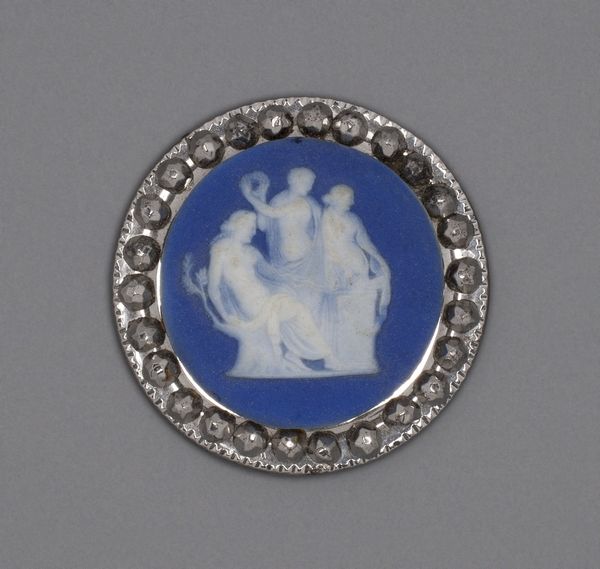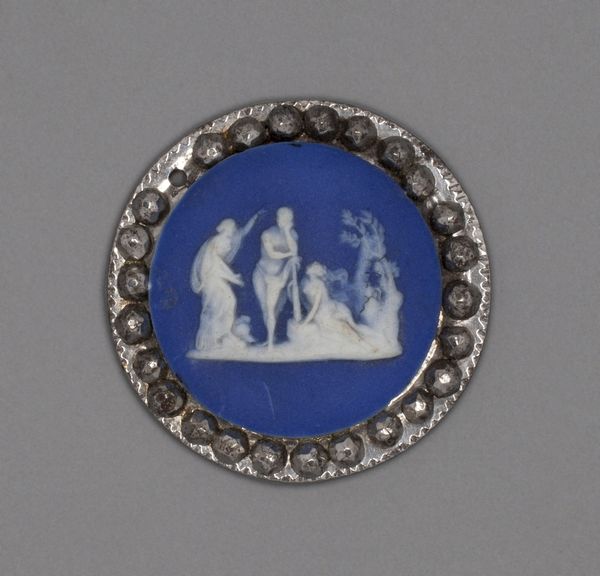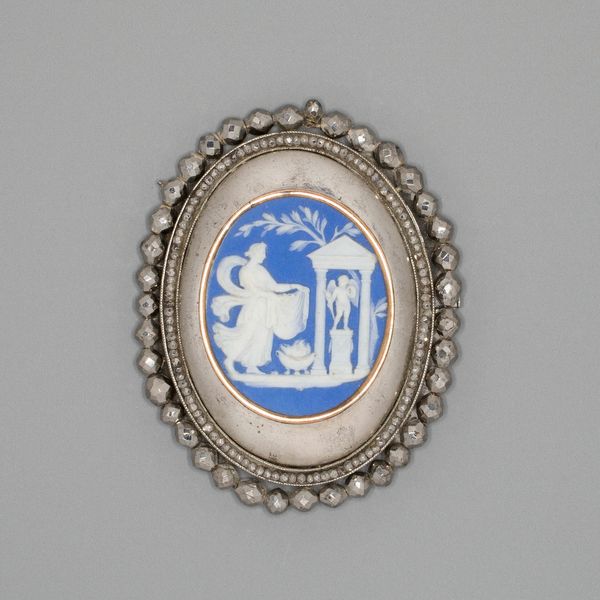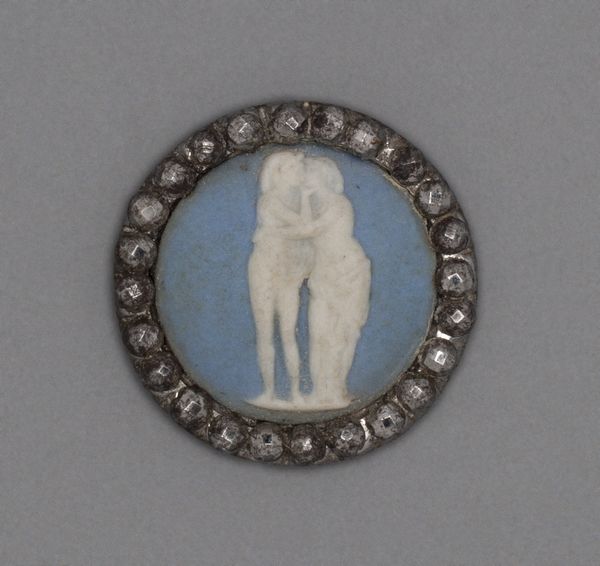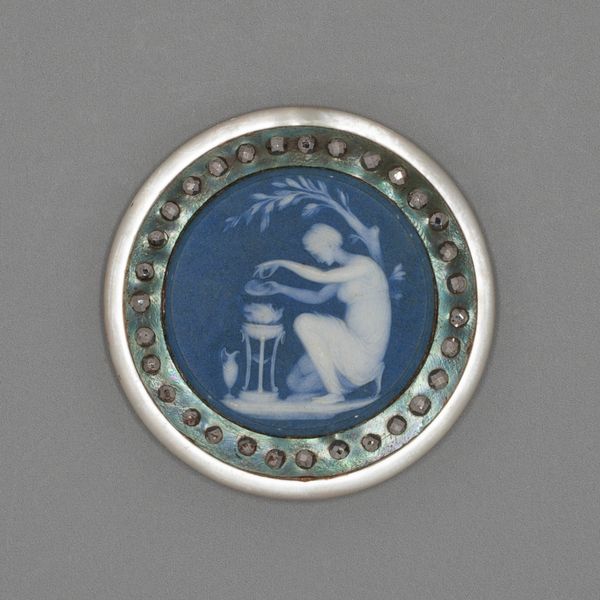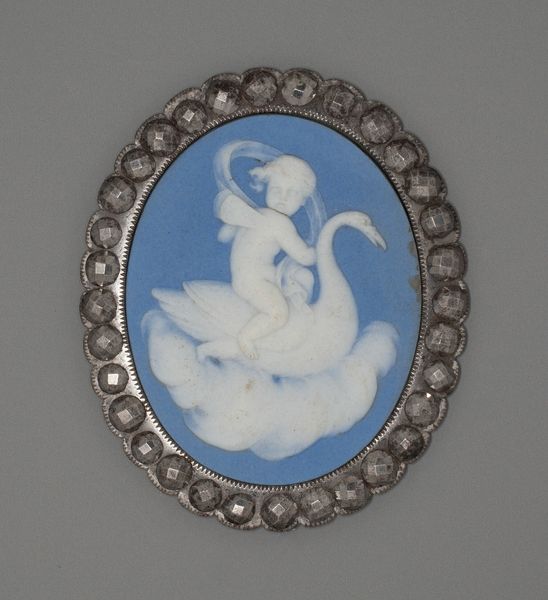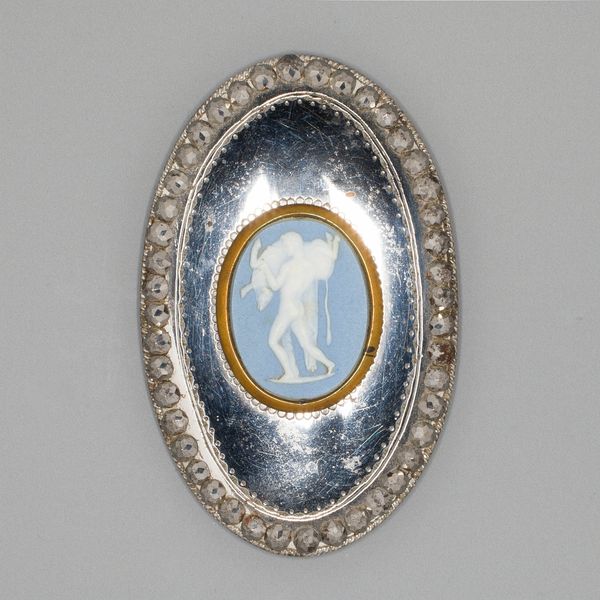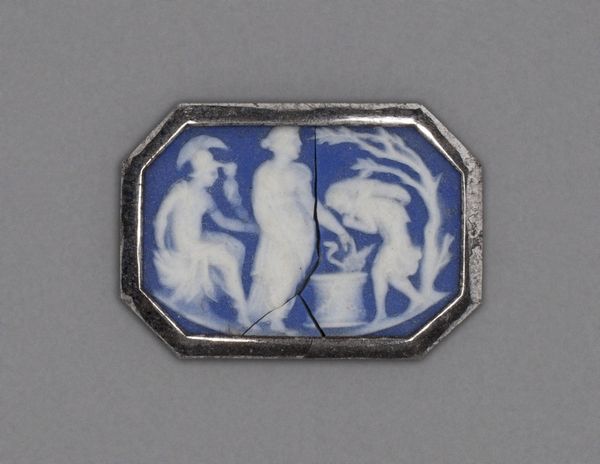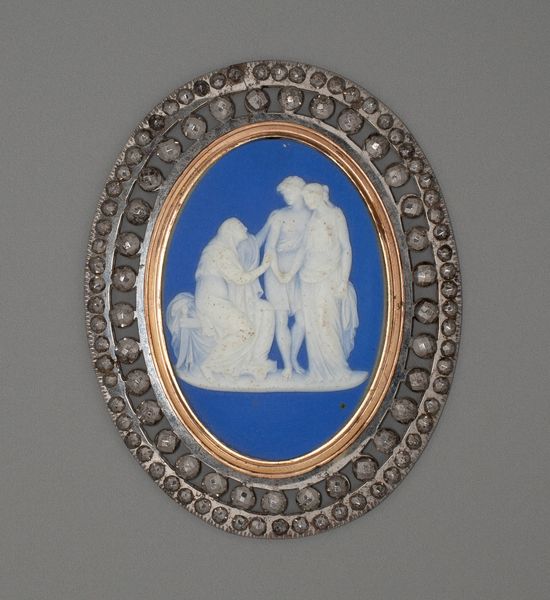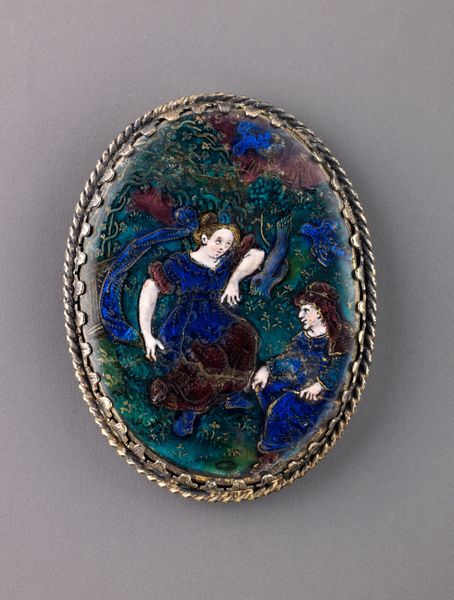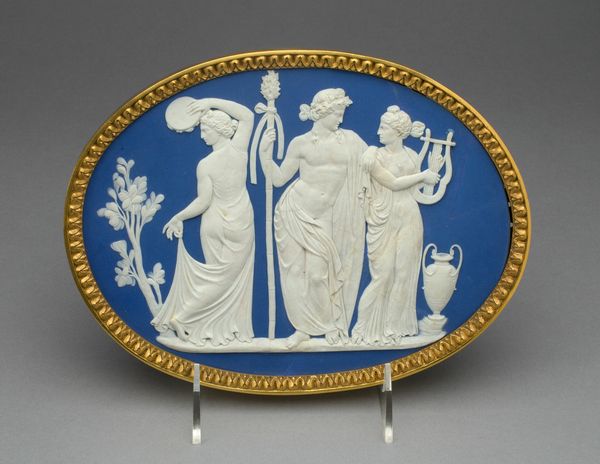
relief, ceramic
#
neoclacissism
#
relief
#
ceramic
#
classical-realism
#
figuration
#
form
#
historical fashion
#
decorative-art
#
miniature
Dimensions: Diam. 3.5 cm (1 3/8 in.)
Copyright: Public Domain
Curator: Before us is a delicate button crafted by the Wedgwood Manufactory, dating back to the late 18th century. Editor: It's remarkably small! And striking, almost ethereal. The blue background against the white relief figure really pops. I'm immediately thinking about the incredible craftsmanship that must have gone into something so minute. Curator: Absolutely. The button embodies the Neoclassical style that was fashionable at the time, drawing inspiration from classical antiquity. We see that particularly in the figures represented. Editor: Definitely, with its sharp lines and clean finish, the attention to detail is amazing for something made with ceramic. Was each button made by hand? Curator: That’s a pertinent question. While Wedgwood certainly employed skilled artisans, he was also interested in rationalizing production. Pieces like this likely involved molded elements, cleverly combined to give that handcrafted appearance. Mass production for a burgeoning consumer culture. Editor: So, in some ways it’s an illusion of handmade quality, masking industrializing processes. Even the frame has a slightly mass-produced look with the repeating pattern. And yet, the figuration itself retains this air of delicacy. What would this button have signified to its wearer? Curator: As a decorative element on clothing, it signaled taste and engagement with fashionable ideals. Neoclassicism carried cultural weight; it represented enlightenment values and a connection to a glorious past. Wearing this button made a statement about one’s own cultivation and social standing. Editor: So much implied meaning for such a small object. Knowing about its production methods makes me see it differently – less a precious antique, and more a manufactured artifact with aspirations. It reminds me of the democratization of taste happening at the time. Curator: Precisely. The button acts as a miniature stage setting for larger societal shifts, with classical art and design permeating all levels of society through innovative techniques and wider markets. Editor: I'm struck now by its dual nature, a piece seemingly timeless while inextricably linked to the changing materials and labor conditions of the 18th century. Curator: Indeed, a button may appear a simple thing, yet it fastens us to a complex web of history, culture, and materiality.
Comments
No comments
Be the first to comment and join the conversation on the ultimate creative platform.
